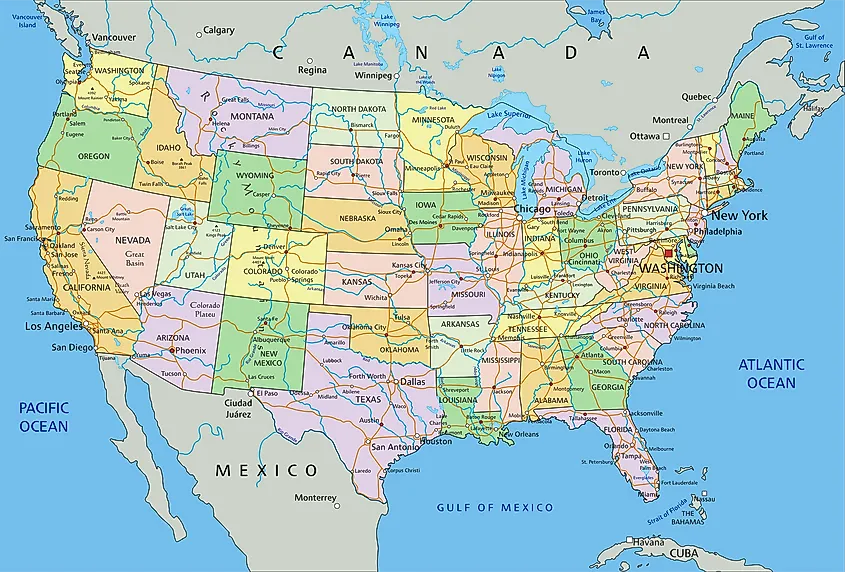Maps have been an essential tool for humanity, serving various purposes from navigation to education. Whether you're planning a road trip, studying geography, or analyzing data trends, maps provide a visual representation of information that is easy to understand. In this article, we will delve into different types of maps, including physical maps, political maps, data maps, and tables, and explore their significance in various fields. Understanding the unique features and applications of these maps can enhance our comprehension of the world around us.
Each type of map serves a distinct purpose, offering insights that cater to specific needs. A physical map, for instance, illustrates the natural features of the Earth, such as mountains, rivers, and valleys. In contrast, a political map focuses on human-created boundaries and regions, highlighting states, countries, and cities. Data maps, on the other hand, provide a visual representation of statistical information, making complex data more digestible. Tables can complement these maps by organizing data in a structured format, allowing for easy comparison and analysis.
In this exploration, we will answer key questions about these various maps. What are the defining characteristics of each type of map? How can they be utilized effectively in different contexts? By the end of this article, you will have a comprehensive understanding of how to reference a physical map, data map, political map, and tables, enhancing your ability to interpret and present geographical and statistical information.
What is a Physical Map?
A physical map is a type of map that depicts the physical features of a region. It highlights natural landmarks such as mountains, valleys, rivers, lakes, and forests. The primary purpose of a physical map is to provide an overview of the geography of an area, making it easier to understand the terrain and landscape. Physical maps often use colors to represent different elevations and features, with green colors indicating low lands and brown or gray representing higher elevations.
How Do Physical Maps Differ from Other Types of Maps?
Physical maps differ from political maps and data maps in several ways:
- Focus: Physical maps concentrate on natural features, while political maps emphasize human geography.
- Representation: Physical maps use color gradients and contours to show elevation, whereas political maps use lines and colors to delineate borders.
- Usage: Physical maps are often used for educational purposes, outdoor activities, and environmental studies, while political maps are used in governance and sociopolitical discussions.
When Should You Use a Physical Map?
Physical maps are particularly useful in contexts such as:
- Outdoor activities like hiking, camping, and navigation.
- Geographical education and research.
- Understanding natural disaster risks, such as floods and earthquakes.
What is a Political Map?
A political map is designed to show governmental boundaries of countries, states, and cities. Unlike physical maps, political maps focus on the human-made boundaries that define regions. These maps often include major cities, bodies of water, and significant landmarks, providing a clear overview of how the world is divided politically.
What Are the Key Features of Political Maps?
Political maps have several key features:
- Color Coding: Different colors are used to represent different countries or states.
- Labels: Major cities, capitals, and other significant locations are labeled for easy identification.
- Boundary Lines: Lines are drawn to indicate borders between political entities.
In What Scenarios Are Political Maps Most Useful?
Political maps are invaluable in various scenarios, including:
- Studying international relations and geopolitics.
- Visualizing election results and demographic data.
- Planning travel itineraries and understanding regional governance.
What is a Data Map?
A data map is a visual representation that incorporates statistical data into a geographical context. These maps can illustrate trends, patterns, and correlations through various data visualization techniques, such as choropleth maps, heat maps, and dot distribution maps. Data maps help to convey complex information in a more accessible manner, enabling easier interpretation and analysis.
How Can Data Maps Enhance Data Interpretation?
Data maps can significantly enhance data interpretation by:
- Providing geographical context for data trends.
- Highlighting disparities across regions.
- Facilitating data-driven decision-making in fields like urban planning, public health, and marketing.
What Types of Data Can Be Represented on Maps?
Various types of data can be represented on data maps, including:
- Population density and demographics.
- Economic indicators such as income levels and employment rates.
- Environmental data like pollution levels and natural resource distribution.
How Can Tables Complement Maps?
Tables serve as an excellent complement to physical, political, and data maps by organizing information in a structured format. They allow for easy comparison between different datasets and can provide detailed statistics that maps alone may not convey. Tables are particularly useful in presenting numerical data, such as population figures or election results, alongside visual representations.
What Are the Benefits of Using Tables with Maps?
Using tables with maps offers several benefits:
- Clarity: Tables can clarify complex information that may be difficult to convey through maps alone.
- Accessibility: They provide a straightforward way to access data for those who may find visual representations challenging.
- Detail: Tables can include precise numerical data that enhances the understanding of map visuals.
When Should You Use Tables in Conjunction with Maps?
Tables should be used in conjunction with maps in scenarios such as:
- Presenting detailed data in reports and presentations.
- Conducting comparative analyses across different regions.
- Enhancing academic research by providing comprehensive datasets.
Conclusion: How to Reference a Physical Map, Data Map, Political Map, and Tables
In summary, understanding how to reference a physical map, data map, political map, and tables is crucial for effective communication and analysis of geographical and statistical information. Each type of map serves a distinct purpose, and when used together, they can offer a more comprehensive understanding of the world. Whether for educational, professional, or personal use, mastering these tools can significantly enhance our ability to interpret and present information accurately.



ncG1vNJzZmixn6PAtr7IZqWeq6RjsLC5jq2pnqaUnruogY6rnJ%2Bdopq7pLGMmmSaZaCdxrS1wpqjZqWRpXqkecOaq5plnZa9bq6MrZibpJVisW68zqWgraGTlrluucCpZaGsnaE%3D